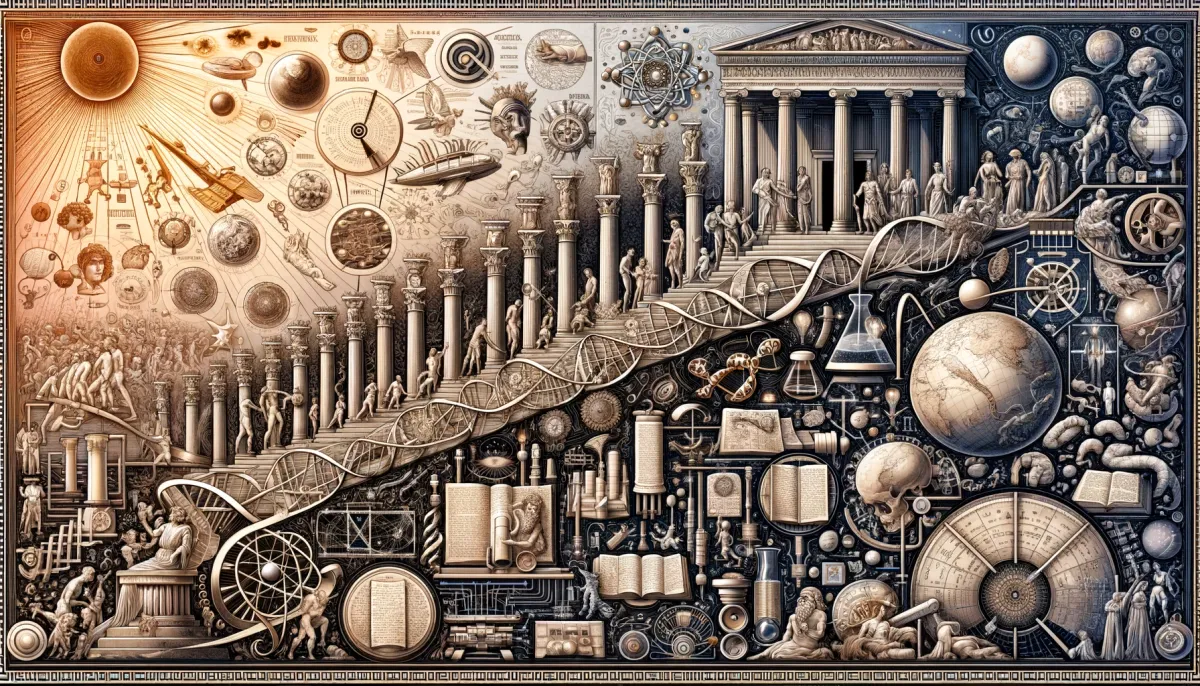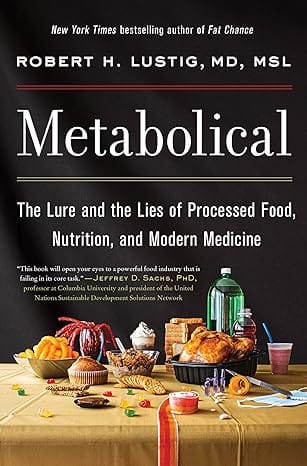Book Review: A Short History of Nearly Everything
The story of science is a fascinating one. Bill Bryson brings this to us in A Short History of Nearly Everything.

How do we know what we know? Science. The pinnacle of human achievement.
Bill Bryson tells us the story of science, but is not a scientist. He approaches each of his subjects as a storyteller. Science itself currently is not taught that well–it's commonly a set of facts–where stories are far more compelling. Class is often a series of experiments that resembles cooking, but with the consequence of a low grade if you deviate from the recipe. What's missing is awe. It's a fundamental human emotion and should be a deeper part of the way knowledge is introduced to us.
The true nature of science is discovery. Humans are wired to explore, discover, and search the unknown. It is incredible what we’ve been able to learn about our universe, planet, and life. We too quickly come to take things for granted, and I hope this review helps you step back just a bit.
The theme of Bryson's A Short History of Nearly Everything is how have we come to know now what we know? The process of science is very different from what we're given in the classroom. The controversies, dead-ends, pain-staking processes of extracting measurements from the tools of the era. These are all missing. That someone would spend half a lifetime collecting precise measurements in some obscure domain, the end up as a supporting point in one footnote of a scientific textbook.
Although Short History was written 20 years ago, it still brings us close to the frontier in many disciplines. It also puts recent discoveries in context. My hope is that in reading this review, you're inspired to pick up the book and gain a better appreciation of how hard-won scientific knowledge really is. It's the pinnacle of human achievement.
1 - The Universe
The fine-tuned universe hypothesis basically states that we're unbelievably lucky in that the “constants” of the universe happen to be set the way that they are. If any of those were different, life as we know it would not exist. Martin Rees cataloged constants such as the ratio of electromagnetic force to gravitational force to the cosmological constant and argues that they are in a narrow, optimal band to support life.
The idea of the edge of the universe is another oddity – it doesn't exist. The best analogy that can help you understand it is thinking about not knowing the earth was a sphere–by thinking it was flat instead–and trying to get to the end of it. This was the state of human knowledge for many centuries! The universe is much the same, but in more dimensions. (What?)
Another sobering thought: according to Bryson, we may never reach the edge of the solar system. At least, not by any means known to man today. The distance is just that vast. Mars can be extremely close to us, yet takes around 7-9 months to get there at the closest (around 300 million miles or 3 AU–astronomical units). Neptune is about 10 times further and the outer edge of the Oort cloud (the edge of our solar system) is around 100,000 AU away. The sun also ceases to be a good source of energy as you get that far away.
Another wondrous fact: our sun is not hot enough to forge iron and many larger elements in the periodic table. That means many of the elements that make life go are the result of our solar system growing out of the remnants of another supernova. While on the subject, we're also extremely fortunate not to have any stars that pose the threat of supernova in our cosmic neighborhood: one would wipe us out by removing our atmosphere if it were close enough (within about 30 light-years).
One last space-based observation: we once had an object the size of Mars crash into Earth, forming the moon. Without that, Earth may not have been stable enough to support life.
2 - Our Planet
Speaking of the Earth, how heavy is it? How old is it? What's inside? How would you even go about figuring out something like that?
The size of the Earth feels a bit more straightforward (if difficult) to measure: you just need to walk around it on some axis. However, early scientists who actually did first estimate the size didn't have great instruments to tell how far they walked, or if they were actually going in a straight direction. Instead, they took a much more onerous route, of which the crux was to measure various angles of incidence with the sun between distant mountain peaks. One very amusing anecdote that Bryson recounts is a French expedition, “least convivial scientific trip of all time.”
He also reminds us of the human element in science:
“Eighteenth-century scientists, the French in particular, seldom did things simply if an absurdly demanding alternative was available.”
How about the weight of the Earth? Scientists came up with the idea of measuring the relative gravity of large and small lead spheres (“fine instrumentation” and painstaking measurement). It‘s absolutely jaw-dropping that this is how we would have measured something like that, much less that it was first done more than a hundred of years ago.
What about the age? You need several supporting theories, but the basic theme is you first need to understand plate tectonics. Much of the Earth's surface is constantly being refreshed: dumped into the mantle and resurfacing as lava at some point. So part 1 is to find some area in the earth where this, by luck, has not happened to some patch of land. Part 2 concerns how to figure out how old that rock is, at this stable patch. There, you use some form of isotope dating (zircon uranium). But understanding the starting point and the decay rates are accomplishments of their own. And then, you're still left with an estimate (of around 4.5 billion years). The dry classroom textbook just gives you the fact: the sun is X years old, the earth is Y years old, and (possibly in your next class) the United States is Z years old. There's no appreciation for how we got to that point, and that's where the magic of science lives.
How about the interior of the Earth? As far as I know, we don't actually know that much about it. We have to have some kind of motor (spinning fluid) to generate the magnetic shield we have around the planet. As you dig down, the earth gets very hot, very quickly (the deepest mine in the world, the Mponeng Gold Mine has a rock temperature of 151 degrees fahrenheit). Apparently the Soviet Union tried to drill to the center of the earth (or at least some distance) to learn more but gave up after 12 km (which itself was quite a feat). Bryson recounts our state of knowledge:
So how much do we know about what’s inside the Earth? Very little. Scientists are generally agreed that the world beneath us is composed of four layers—a rocky outer crust, a mantle of hot, viscous rock, a liquid outer core and a solid inner core.[*] We know that the surface is dominated by silicates, which are relatively light and not heavy enough to account for the planet’s overall density. Therefore there must be heavier stuff inside. We know that to generate our magnetic field somewhere in the interior there must be a concentrated belt of metallic elements in a liquid state. That much is universally accepted. Almost everything beyond that—how the layers interact, what causes them to behave in the way they do, what they will do at any time in the future—is a matter of at least some uncertainty, and generally quite a lot of uncertainty.
The most alarming uncertainty at the heart of the matter may be around when the magnetic core “reverses” – or starts spinning the other way. We know this happens because the orientation of magnetic particles in rocks do not always point uniformly in the same direction (as if “north” were to flip). A bigger consequence is that this magnetic shield protects us and our electronics from solar radiation. Cixin Liu's Supernova Era (author of the Three-Body Problem) explores one sci-fi version of this. I cite that book not for its scientific accuracy, but for the scale of the consequence.
One more detail about the Earth that really stuck with me: the Yellowstone Caldera. Or you may know it better as Yellowstone National Park. As a visitor, younger me didn't think too deeply about why geysers were concentrated there–a consequence of the earth's crust being extremely thin. Scientists in the 1960s suspected it might have been a volcano at some point but could not find the caldera (the crater left behind after a large eruption). It turns out some early NASA imagery solved the puzzle: the caldera was the entire park, 65 km across. That makes Yellowstone a supervolcano. It is one that erupts around once every 600,000 years and the last eruption was… 600,000 years ago. The consequences of an eruption would be catastrophic:
The Yellowstone eruption of two million years ago put out enough ash to bury New York State to a depth of 20 metres or California to a depth of 6 metres.
It would induce many long winters and greatly reduce food production, globally. Life would have a much harder time after an eruption like that.
3 - Life on Earth
Life itself is amazing, and without which we would not be reading this book review or much else. But what are the appropriate priors to have on life in general? How long does a species live? Average: 4m years…we think – the fossil record is an extremely limited sample of all life, with many gaps. For example, regarding the dinosaurs:
For the whole of the age of dinosaurs, fewer than 1,000 species have been identified (almost half of them known from a single specimen), which is about a quarter of the number of mammal species alive now.
Bryson recounts 4 key facts that help life thrive on our planet:
- Excellent location. “We are, to an almost uncanny degree, the right distance from the right sort of star, one that is big enough to radiate lots of energy, but not so big as to burn itself out swiftly.” We’d be Mars/Venus if 1% further or 5% closer.
- We have the right kind of planet. “[M]olten interior, but it’s a pretty near certainty that without all that magma swirling around beneath us we wouldn’t be here now. … our lively interior created the outpourings of gas that helped to build an atmosphere and provided us with the magnetic field that shields us from cosmic radiation. It also gave us plate tectonics, which continually renews and rumples the surface.”
- We’re a twin planet. The moon keeps us stable, although sadly it’s leaving us at a subtly depressing rate of 4 cm each year.
- Timing. We came around when there weren't dinosaurs. We're an absurdly fragile species physically but have big, energy-hungry brains that help us make sense and master our world. This mastery is the story of science!
The last point about timing brings up one of the most fundamental points of all – how much longer are we going to be here? For a specific treatment of existential risk, I highly recommend Toby Ord's The Precipice. In this review, I want to highlight that there have been 5 (or 6) major extinctions throughout history. We know very little of what happened. Even the investigation of what killed the dinosaurs was contentious but likely due to a meteor strike. Are we equally vulnerable today? Here are a couple of quotes from Short History that drive this point home:
“The history of life,” wrote Gould, “is a story of massive removal followed by differentiation within a few surviving stocks, not the conventional tale of steadily increasing excellence, complexity, and diversity.” Evolutionary success, it appeared, was a lottery.
Whatever the actual total, 99.99 per cent of all species that have ever lived are no longer with us. “To a first approximation,” as David Raup of the University of Chicago likes to say, “all species are extinct.”
While this may inspire terror or fear, I also think it’s worth expressing some gratitude and wonder at what it takes for a species like ours to survive. There is just so much we don't know about the world. This also brings to mind my favorite anecdote in the entire book, regarding discovery:
There was so much unrecognized novelty in the collection that at one point upon opening a new drawer Conway Morris famously was heard to mutter, “Oh fuck, not another phylum.”
4 - Frontiers of Science
In our journey of learning about the cosmos, our world, and ourselves, we still have so much to do. I hope by this point you also feel inspired by the wonders of what science has provided and find a place you'll want to contribute. Here's a list of very interesting questions at the time of this writing--some of which may be solved by the time you read this!
- Dark matter – most of the universe is made up of something that we just don't understand.
- Giant squid and the depths – the ocean floor is less well understood than the surface of the moon
- Earthquakes and volcanoes – both seem to strike randomly as far as we know today. We can get perhaps a short warning, but a deeper understanding of the pressures for plate tectonics could transform lives.
- The Earth's Core – what's in the core and what determines the boundaries. I have no idea how we'd make progress but it is one of the great mysteries of our planet.
- Gut microbiome and health – and diet more generally. We understand little about specific treatments and how they can influence whether or not you thrive. There's a general increase in malady and inflammation that's not well understood. I suspect diet and environment are causes.
- The Cell Atlas – a massive scientific project in progress to understand how cells work. I highly recommend A Song of the Cell to learn more. (review forthcoming, aspirationally)
- The brain and the nature of intelligence – the most complex structure in the universe, and we all have one. We are incredibly capable learning machines and there is so much unknown. We’re also starting to building machines to do some of this thinking for us.
Great work in science is often a loop of measurement and theorizing. In our time I expect both of these to advance rapidly with the advent of AI. There’s so much that had to go right for us to be here. Let’s make sure to add the wonder of life to the list of things we’re thankful for.
Appendix – here are other interesting stories and facts that, for the length of the review, did not fit nicely into the main body:
- The size of the universe and the use of standard candles
- The great Caltech physicist Richard Feynman once observed that if you had to reduce scientific history to one important statement it would be: “All things are made of atoms.”
- Electrons ARE everywhere at once, like how blades of a spinning fan seem; this prevents matter from flowing through other matter (sitting on a chair)
Had the neutron been isolated in the 1920s, they note, it is “very likely the atomic bomb would have been developed first in Europe, undoubtedly by the Germans.”
Quantum mechanics: Nothing could outrace the speed of light and yet here were physicists insisting that, somehow, at the subatomic level, information could. (No-one, incidentally, has ever explained how the particles achieve this feat. Scientists have dealt with this problem, according to the physicist Yakir Aharanov, “by not thinking about it.”)
- The story of the mystery of dark matter / dark energy
- The upshot of all this is that we live in a universe whose age we can’t quite compute, surrounded by stars whose distances from us and each other we don’t altogether know, filled with matter we can’t identify, operating in conformance with physical laws whose properties we don’t truly understand.
- The construction of the periodic table of elements
- Einstein’s insights into speed of light and relativity
- The various eras of the earth in geology
- Mass extinctions and the KT boundary – asteroid impact chance – what exactly is causing all of these extinctions and is that the default?
- Just how special water is: that ice floats meaning the feedback loops keep energy in rather than out may be one of the keys to life
Without surface ice to hold heat in, the water’s warmth would radiate away, leaving it even chillier and creating yet more ice. Soon even the oceans would freeze and almost certainly stay that way for a very long time, probably for ever—hardly the conditions to nurture life. Thankfully for us, water seems unaware of the rules of chemistry or laws of physics.



